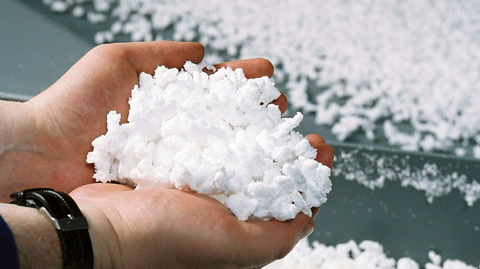Ceat sees double-digit declines in rubber material costs

Collected Image
Tire maker notes continuing reductions in natural rubber and synthetic rubber pricing. Earnings at Indian tire manufacturer Ceat Ltd are being bolstered by significant declines in rubber raw materials costs a trend its management expects to run at least into early 2023.
Natural rubber prices on international markets have fallen by around 20% quarter-on-quarter, Ceat CFO Kumar Subbiah indicated on an 8 Nov call with investment analysts.
For instance, he said, in the local market, natural rubber prices have moved down from a level of around INR172/kg to about INR150/kg over recent months.
However, the price development translated into a raw materials cost reduction of just 2.5-3.0% on raw materials costs during the second quarter, according to Subbiah.
The difference, he explained, largely reflects recent currency trends as well as a lag of about three months due to inventory holdings of both rubber and finished goods.
But, added the Ceat executive, “we expect the ‘[raw materials] cost reductions to flow progressively month-on-month and as far as natural rubber is concerned.”
“Prices of natural rubber has been softening over the last few months, the benefit of which should start creeping in from the second half of the third quarter,” concurred Anant Goenka, managing director, Ceat Ltd.
The Ceat officials went on to identify lower demand from China as the driving factor behind drop in the international prices of natural rubber.
The tire maker has also seen a drop of between 12% and 15% in synthetic rubber prices over the last three months.
“In case of synthetic rubber prices, also we are seeing… correction with a lag,” said Subbiah. “If crude drops, then butadiene drops, then the synthetic rubber drops, then after that we get that benefit.”
But, again, the cost savings will be partly offset by currency impacts, the CFO noting that “even when we buy synthetic rubber from the local suppliers, it is an import parity kind of a pricing.”
Reviewing material cost trends overall, Goenka said the beginning of Ceat’s fiscal quarter four, January “should be better” though he preferred to reserve judgment as commodity prices can bounce back very quickly.
Nevertheless, the MD forecast that “quarter four should be lower than quarter three,” adding that “even in the current quarter, we expect December prices to be lower than November… [and] January could also be little less than December.”
Natural rubber prices on international markets have fallen by around 20% quarter-on-quarter, Ceat CFO Kumar Subbiah indicated on an 8 Nov call with investment analysts.
For instance, he said, in the local market, natural rubber prices have moved down from a level of around INR172/kg to about INR150/kg over recent months.
However, the price development translated into a raw materials cost reduction of just 2.5-3.0% on raw materials costs during the second quarter, according to Subbiah.
The difference, he explained, largely reflects recent currency trends as well as a lag of about three months due to inventory holdings of both rubber and finished goods.
But, added the Ceat executive, “we expect the ‘[raw materials] cost reductions to flow progressively month-on-month and as far as natural rubber is concerned.”
“Prices of natural rubber has been softening over the last few months, the benefit of which should start creeping in from the second half of the third quarter,” concurred Anant Goenka, managing director, Ceat Ltd.
The Ceat officials went on to identify lower demand from China as the driving factor behind drop in the international prices of natural rubber.
The tire maker has also seen a drop of between 12% and 15% in synthetic rubber prices over the last three months.
“In case of synthetic rubber prices, also we are seeing… correction with a lag,” said Subbiah. “If crude drops, then butadiene drops, then the synthetic rubber drops, then after that we get that benefit.”
But, again, the cost savings will be partly offset by currency impacts, the CFO noting that “even when we buy synthetic rubber from the local suppliers, it is an import parity kind of a pricing.”
Reviewing material cost trends overall, Goenka said the beginning of Ceat’s fiscal quarter four, January “should be better” though he preferred to reserve judgment as commodity prices can bounce back very quickly.
Nevertheless, the MD forecast that “quarter four should be lower than quarter three,” adding that “even in the current quarter, we expect December prices to be lower than November… [and] January could also be little less than December.”
Source: https://www.european-rubber-journal.com